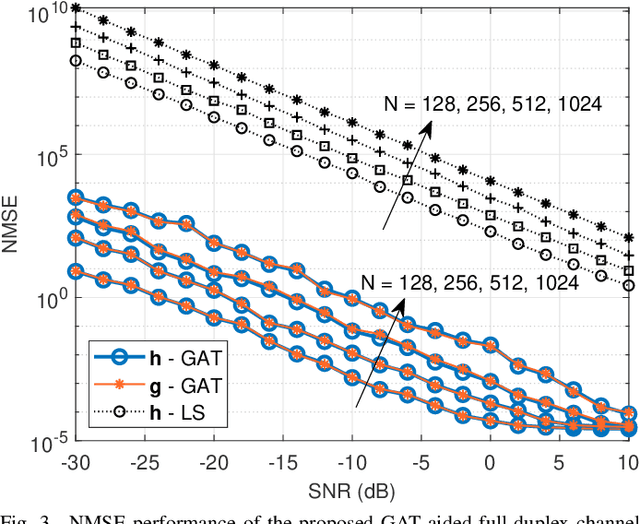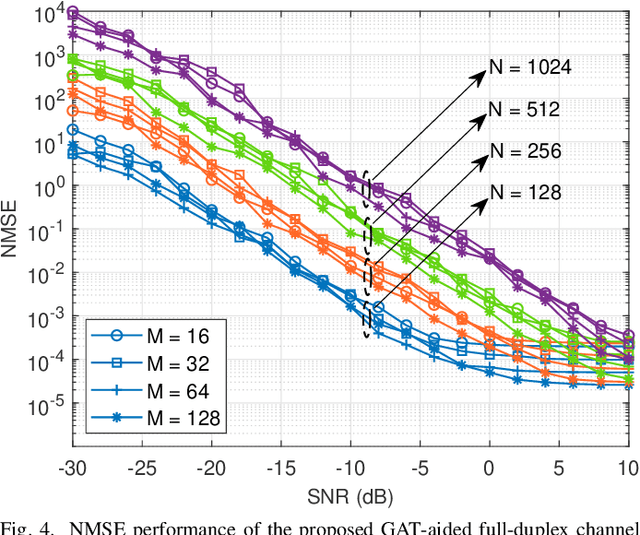Channel Estimation for Full-Duplex RIS-assisted HAPS Backhauling with Graph Attention Networks
Paper and Code
Oct 22, 2020



In this paper, the graph attention network (GAT) is firstly utilized for the channel estimation. In accordance with the 6G expectations, we consider a high-altitude platform station (HAPS) mounted reconfigurable intelligent surface-assisted two-way communications and obtain a low overhead and a high normalized mean square error performance. The performance of the proposed method is investigated on the two-way backhauling link over the RIS-integrated HAPS. The simulation results denote that the GAT estimator overperforms the least square in full-duplex channel estimation. Contrary to the previously introduced methods, GAT at one of the nodes can separately estimate the cascaded channel coefficients. Thus, there is no need to use time-division duplex mode during pilot signaling in full-duplex communication. Moreover, it is shown that the GAT estimator is robust to hardware imperfections and changes in small scale fading characteristics even if the training data do not include all these variations.
 Add to Chrome
Add to Chrome Add to Firefox
Add to Firefox Add to Edge
Add to Edge